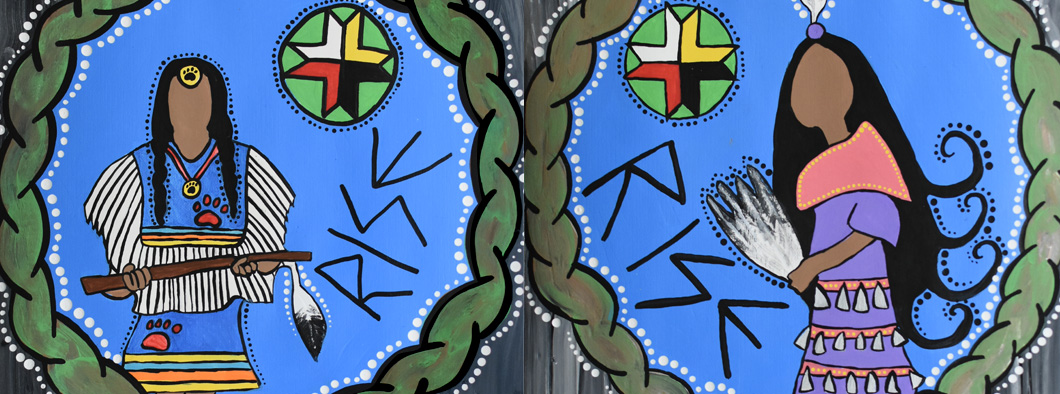Ta’n Teli-ikanpukuimk
To Be a Leader
Tan Wen Eli Nikanikapuwit
Theme:
Kiskuk Ta’n Teliaq
Contemporary Issues
Tokec Weskuwitasikil Eleyik
Global Competencies
Critical Thinking and Problem Solving
- Learners engage in an inquiry process to solve problems, as well as acquire, process, interpret, synthesize, and critically analyze information to make informed decisions. (Activity 1 and 2)
- Learners select strategies, resources, and tools to support their learning, thinking, and problem-solving and evaluate the effectiveness of their choices. (Activity 1)
- Learners analyze the functions and interconnections of social, ecological, and economic systems. (Activity 1 and 2)
Innovation, Creativity, and Entrepreneurship
- Learners take risks in their thinking and creating; they discover through inquiry research, hypothesizing, and experimenting with new strategies or techniques. (Activity 1)
Self-Awareness and Self-Management
- Learners develop and identify personal, educational, and career goals, opportunities, and pathways; they monitor their progress; and they persevere to overcome challenges. (Activity 1 and 2)
- Learners accurately self-assess their current level of understanding or proficiency and advocate for support based on their strengths, needs, and how they learn best. (Activity 1)
Collaboration
- Learners network with a variety of communities/groups and appropriately use an array of technology to work with others. (Activity 2)
- Learners demonstrate empathy for others in a variety of contexts. (Activity 2)
Communication
- Learners express themselves using the appropriate communication tools for the intended audience and create a positive digital identity. (Activity 2)
- Learners communicate effectively in French and/or English and/or Mi’kmaq or Wolastoqey Latuwewakon through a variety of media and in a variety of contexts. (Activity 2)
- Learners gain knowledge about a variety of languages beyond their first and additional languages; they recognize the strong connection between language and ways of knowing the world. (Activity 2)
Sustainability and Global Citizenship
- Learners understand the interconnectedness of social, ecological, and economic forces, and how they affect individuals, societies, and countries. (Activity 2)
- Learners recognize discrimination and promote principles of equity, human rights, and democratic participation. (Activity 1 and 2)
- Learners understand Indigenous worldviews, traditions, values, customs, and knowledge. (Activity 1 and 2)
- Learners learn from and with diverse people, develop cross-cultural understanding, and understand the forces that affect individuals and societies. (Activity 1 and 2)
Curriculum Outcomes
English Language Arts
Specific Curriculum Outcomes
- 4. Students will describe and discuss their own processes and strategies in reading and viewing (Activity 2)
- 5. Students will respond to personal, group, and instructional needs for information through accessing a variety of texts (Activity 1 and 2)
- 5. Students will show an awareness of the kinds of language appropriate to different situations and audiences (Activity 2)
- 5. Students will use a range of reference texts and an electronic search to aid in the selection of texts (Activity 2)
- 7. Students will identify instances where language is being used to manipulate, persuade, or control them (Activity 1 and 2)
- 10. Students will select, organize, and combine relevant information from three or more sources to construct and communicate meaning (Activity 3)
Health
Specific Curriculum Outcomes
- 3.1 Analyze how appreciating diversity enhances community relationships (Activity 2)
Career Development
- 4.1 Develop further interests, skills, strengths, and personal qualities to build/enhance a positive self-concept (Activity 1)
- 4.2 Investigate specific careers and its relatedness to personal skills and interests (Activity 2)
Social Studies
Specific Curriculum Outcomes
Students will be able to:
- 5.4.2 Examine decision-making practices in First Nations societies (Activity 2)
- 5.6.1 Illustrate the similarities and differences of past societies and one’s society (Activity 1 and 2)
Associated Text Materials
Grade 5 – Investigating Past Societies*
- p. 148 – How has Social Structure Changed and Remained the Same?
* Although the textbook is titled “Investigating Past Societies”, it should be noted that it also deals with societies that exist now.





